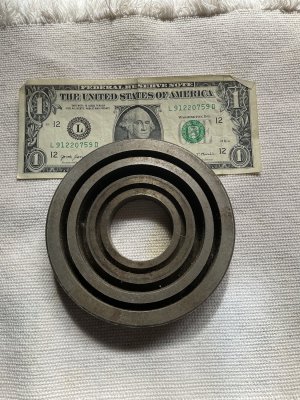The original complaint was about making all the chips. If you want chips, make a deburring wheel extension for a buffer. Take a 3" diameter piece onf 1018. Turn a shaft of 1" diameter about 2" long leaving a 1/4" disk to but up against the wheel. Turn a 1" shaft 3/4" then the 1/4" disk and then a shaft 1.2" diameter 3/4" inch long Drill, bore. tap threads and turn recesses and mill flats to fit a wrench. Moved the ScotchBrite wheel out 3/4" which tripled production. Also filled a 20 lb cat food bag with chips and bird nest. That is what a lathe does.
Pretty certain Jo Pi did a video where he showed cleaning up a CNC machine at the end of the day. Used a shovel to fill garbage cans.
Pretty certain Jo Pi did a video where he showed cleaning up a CNC machine at the end of the day. Used a shovel to fill garbage cans.


